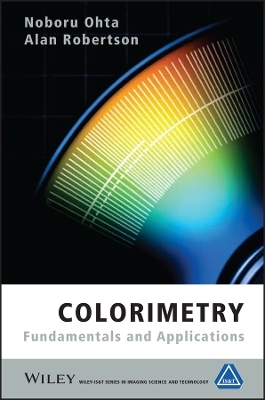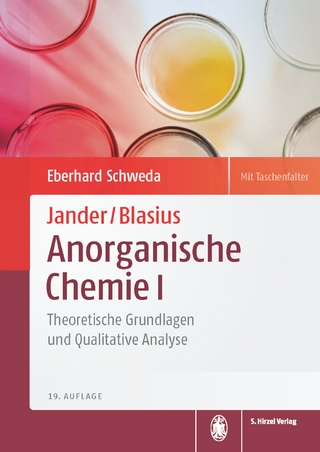
Colorimetry
John Wiley & Sons Inc (Verlag)
978-0-470-09472-3 (ISBN)
Colorimetry, the science of quantitvely describing color, is essential for color reproduction technology. This is because it creates standards by which to measure color, using mathematical techniques and software to ensure fidelity across media, allow accurate color mixing, and to develop color optimization. This book is a comprehensive and thorough introduction to colorimetry, taking the reader from basic concepts through to a variety of industrial applications. Set out in clear, easy-to-follow terminology, Ohta and Robertson explain fundamental principles such as color specification, the CIE (International Commission on Illumination) system, and color vision and appearance models. They also cover the following topics:
the optimization of color reproduction;
uniform color spaces and color difference formulae, including the CIEDE 2000 formula;
applications of metamerism, chromatic adaptation, color appearance and color rendering;
mathematical formulae for calculating color mixing, maximising luminous efficacy, and designing illuminants with specific properties.
Colorimetry: Fundamentals and Applications is an ideal reference for practising color engineers, color scientists and imaging professionals working on color systems. It is also a practical guide for senior undergraduate and graduate students who want to acquire knowledge in the field.
Noboru Ohta earned his B.Sci., and Dr.Eng.from the University of Tokyo. In 1968, he joined Fuji Photo Film and From 1973, he spend three y ears under Gunter Wyszecki at the National Research Council of Canada. He has taught colorimetry and color reproduction at a variety of universities. he joined Rochester Institute of Technology in 1998, and is associated there with the Munsell Color Science Laboratory in the Center for Imaging Science. He has published more than 100 technical paper sin Japanese and English, and several books on colorimetry and color reproduction in Japanese, Chinese, and Korean. He has been active in a variety of academic societies, and also in standards organizations such as the Japanese Industrial Standards (JIS), the American National Standards Institute (ANSI), and the International Commission on Illumination (CIE). Alan Robertson earned his B.Sc and Ph.D. from the University of London, where he studied under David Wright. He then joined Gunter Wyszecki at the National Research Council of Canada and Spent 35 years there before retiring in 2000. He has published over 50 papers in journals and conference proceedings and has given more than 60 invited talks in 10 countries. He is former President of the international Color Association (AIC) and Vice President of the International Commission on Illumination (CIE). In 2005, he received the Godlove Award of the Inter-Society Color Council (ISCC) for long-term contributions in the field of color.
About the Authors ix
Series Preface xi
Preface xiii
Introduction xv
1 Light, Vision and Photometry 1
1.1 Light 1
1.2 Mechanism of the Human Eye 4
1.3 Adaptation and Responsivity of the Human Eye 7
1.4 Spectral Responsivity and the Standard Photometric Observer 9
1.5 Definition of Photometric Quantities 17
1.6 Photometric Units 21
1.7 Calculation and Measurement of Photometric Quantities 26
1.8 Relations Between Photometric Quantities 31
Note 1.1 Luminous Exitance, Illuminance, and Luminance of a Perfect Diffusing Plane Light Source 34
Note 1.2 Luminance and Brightness 36
2 Color Vision and Color Specification Systems 39
2.1 Mechanism of Color Vision 39
2.2 Chemistry of Color Vision 46
2.3 Color Specification and Terminology 48
2.4 Munsell Color System 52
2.5 Color System Using Additive Color Mixing 57
Note 2.1 Colorfulness, Chroma and Saturation 61
3 CIE Standard Colorimetric System 63
3.1 RGB Color Specification System 63
3.2 Conversion into XYZ Color Specification System 68
3.3 X10Y10Z10 Color Specification System 71
3.4 Tristimulus Values and Chromaticity Coordinates 74
3.5 Metamerism 76
3.6 Dominant Wavelength and Purity 78
3.7 Color Temperature and Correlated Color Temperature 82
3.8 Illuminants and Light Sources 85
3.9 Standard and Supplementary Illuminants 92
Note 3.1 Derivation of Color Matching Functions from Guild and Wright’s Results 96
Note 3.2 Conversion between Color Specification Systems 99
Note 3.3 Conversion into XYZ Color Specification System 101
Note 3.4 Imaginary Colors [X] and [Z] 105
Note 3.5 Photometric Quantities in the X 10 Y 10 Z 10 Color System 108
Note 3.6 Origin of the Term ‘Metamerism’ 109
Note 3.7 Simple Methods for Obtaining Correlated Color Temperature 110
Note 3.8 Color Temperature Conversion Filter 111
Note 3.9 Spectral Distribution of Black-body Radiation 113
4 Uniform Color Spaces 115
4.1 Uniform Chromaticity Diagrams 115
4.2 Uniform Lightness Scales (ULS) 122
4.3 CIE Uniform Color Spaces 127
4.4 Correlates of Perceived Attributes 132
4.5 Comparing CIELAB and CIELUV Color Spaces 134
4.6 Conversion of Color Difference 140
4.7 Color Difference Equations Based on CIELAB 143
Note 4.1 Calculation of Munsell Value V from Luminous Reflectance Y 144
Note 4.2 Modified CIELAB and CIELUV Equations for Dark Colors 146
Note 4.3 Other Color Difference Formulas 147
Note 4.4 Direct Calculation of Hue Difference ΔH* 150
5 Measurement and Calculation of Colorimetric Values 153
5.1 Direct Measurement of Tristimulus Values 153
5.2 Spectral Colorimetry 156
5.3 Geometrical Conditions for Measurement 158
5.4 Calculation of Colorimetric Values 161
5.5 Colorimetric Values in CIELAB and CIELUV Uniform Color Spaces 167
Note 5.1 Spectral Colorimetry of Fluorescent Materials 172
Note 5.2 Reference Standard for Reflection Measurements 173
6 Evolution of CIE Standard Colorimetric System 175
6.1 Additive Mixing 176
6.2 Subtractive Mixing 180
6.3 Maximum Value of Luminous Efficacy and Optimal Colors 184
6.4 Chromatic Adaptation Process 188
6.5 von Kries’ Predictive Equation for Chromatic Adaptation 191
6.6 CIE Predictive Equations for Chromatic Adaptation 194
6.7 Color Vision Models 197
6.8 Color Appearance Models 198
6.9 Analysis of Metamerism 204
Note 6.1 Color Mixing Rule 211
Note 6.2 Lambert–Beer Law 213
Note 6.3 Method for Calculating the Maximum Value of the Luminous Efficacy of Radiation 214
Note 6.4 Method for Calculating Optimal Colors 215
Note 6.5 Method for Obtaining Fundamental Spectral Responsivities 216
Note 6.6 Deducing von Kries’ Predictive Equation for Chromatic Adaptation 221
Note 6.7 Application of von Kries’ Equation for Chromatic Adaptation 223
Note 6.8 Application of CIE 1994 Chromatic Adaptation Transform 225
Note 6.9 Theoretical Limits for Deviation from Metamerism 226
7 Application of CIE Standard Colorimetric System 229
7.1 Evaluation of the Color Rendering Properties of Light Sources 229
7.2 Evaluation of the Spectral Distribution of Daylight Simulators 237
7.3 Evaluation of Whiteness 242
7.4 Evaluation of Degree of Metamerism for Change of Illuminant 244
7.5 Evaluation of Degree of Metamerism for Change of Observer 249
7.6 Designing Spectral Distributions of Illuminants 255
7.7 Computer Color Matching 261
Note 7.1 Computation Method for Prescribed Spectral Distributions 268
Appendix I Basic Units and Terms 271
AI.1 SI Units 271
AI.2 Prefixes for SI Units 272
AI.3 Fundamental Constants 272
AI.4 Greek Letters 272
Appendix II Matrix Algebra 275
AII.1 Addition and Subtraction of Matrices 276
AII.2 Multiplication of Matrices 277
AII.3 Inverse Matrix 277
AII.4 Transpose Matrix 278
Appendix III Partial Derivatives 281
Appendix IV Tables 285
References 321
Bibliography 327
Index 329
| Erscheint lt. Verlag | 1.12.2005 |
|---|---|
| Reihe/Serie | The Wiley-IS&T Series in Imaging Science and Technology |
| Verlagsort | New York |
| Sprache | englisch |
| Maße | 160 x 234 mm |
| Gewicht | 624 g |
| Themenwelt | Naturwissenschaften ► Chemie ► Analytische Chemie |
| Naturwissenschaften ► Physik / Astronomie ► Optik | |
| Technik ► Elektrotechnik / Energietechnik | |
| ISBN-10 | 0-470-09472-9 / 0470094729 |
| ISBN-13 | 978-0-470-09472-3 / 9780470094723 |
| Zustand | Neuware |
| Haben Sie eine Frage zum Produkt? |
aus dem Bereich


